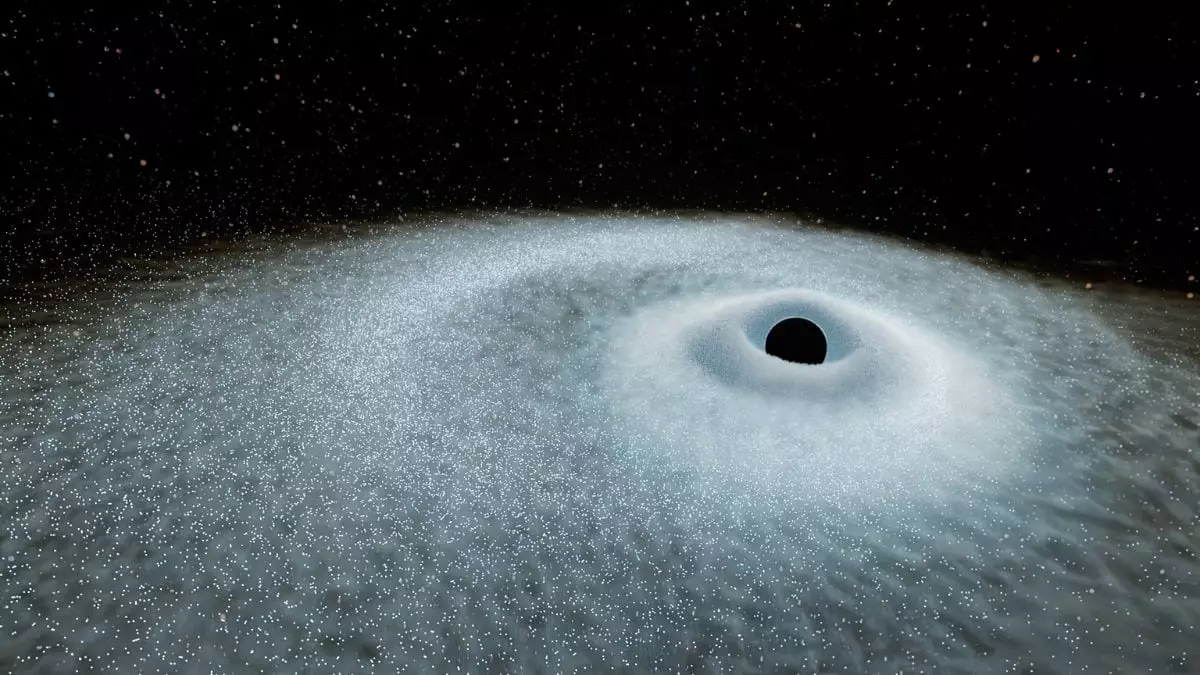In an astonishing revelation, astronomers have unveiled a new category of cosmic phenomena known as “extreme nuclear transients” (ENTs). This extraordinary classification encompasses the most energetic explosions observed to date, resulting from the brutal interactions between supermassive black holes and massive stars—those at least three times the mass of our Sun. Such violent collisions are not merely peripheral spectacles; they are a reminder of the unfathomable dynamism that governs our universe, forcing us to confront the violent nature of cosmic existence in striking ways.
The Magnitude of Discovery
Recent studies have revealed that these ENTs emit a brightness almost ten times greater than what has been recorded from typical tidal disruption events. It’s as if a celestial spotlight has been turned on, illuminating the enigmatic behavior of black holes at the heart of galaxies. Notably, a report published on June 4 in *Science Advances* detailed the work of lead researcher Jason Hinkle from the University of Hawaii’s Institute for Astronomy. His team identified two extraordinary flares traced back to 2016 and 2018—enigmatic signals captured by the European Space Agency’s Gaia spacecraft. Observations intensified when a third flare emerged in 2020, revealing striking similarities that solidified their classification as ENTs.
Energy Beyond Supernovae
The energy unleashed during these cosmic flare-ups eclipses that of supernovae, which have long been deemed the spectacular endgame of stellar life. ENTs persist with a ferocity that astounds researchers, outshining these traditional harbingers of death in the cosmos. The longevity of these eruptions casts a new light on the lifecycle of the universe’s most colossal black holes and their peculiar feeding habits. Within this context, the implications of these discoveries extend far beyond the observation of rare phenomena; they offer profound insights into the birth and growth of supermassive black holes, challenging the very frameworks through which we understand celestial evolution.
Illuminating the Universe’s Fabric
The potent brightness of ENTs serves as a beacon, allowing astronomers to peer back into the universe’s early epochs, clarifying the once-obscured relationship between black holes and surrounding stars. Co-author Benjamin Shappee, a Hubble fellow at IfA, eloquently posits that these flares illuminate the very growth patterns of supermassive black holes. This newfound knowledge opens up a plethora of opportunities for cosmological studies, suggesting that our understanding of galactic structures, as well as energy transfer, could undergo revolutionary changes.
Unraveling Cosmic Mysteries
In light of these groundbreaking findings, one must appreciate that the journey of understanding ENTs is far from complete. As current models adjust to accommodate these newly understood phenomena, researchers are eager to learn more about how these cataclysmic events interact with their environments. Future celestial missions promise enhanced observational instruments that will provide clearer insights into these extraordinary explosions, driving forward our quest to understand the destructive forces that continue to shape the universe.
In the grand tapestry of astrophysics, the emerging narrative of extreme nuclear transients might ultimately redefine our perceptions of cosmic behavior, pushing us closer to decoding the mysteries of the universe that lie beyond the cosmic veil.


Leave a Reply